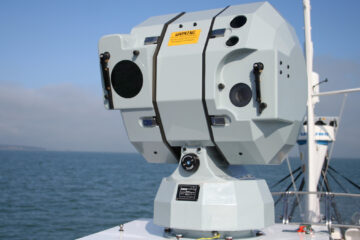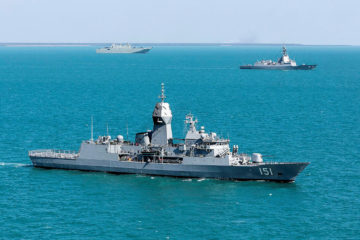As Australia starts the ball rolling on acquiring nuclear-powered submarines, their current force remains in focus. The nuclear boats will be delivered under a new Australia-United Kingdom-United States (AUKUS) partnership. AUKUS is a bold step and comes with many challenges. Transferring to the nuclear submarines is extremely complex.
And it will take time. So until then, the Collins Class will remain the backbone of the Royal Australian Navy (RAN). To keep it a leading design, the Collins Class will be substantially upgraded.
The ‘Life of type extension’ will extend their service life until 2048, or later if required.
Speaking at Saab’s Submarine Seminar on September 28, Andy Keough, the Managing Director of Saab Australia, emphasized the deterrence aspect of a countries’ submarine needs. He shared that submarines provided “deterrence, protecting a nations livelihood and national interest”. Submarines are a unique asset, a strategic asset. He also emphasized the long-range nature of Australia’s submarine needs.
Since the RAN’s first AE Class submarines during World War One, their boats have been required to do extended missions. This is quite unlike most other navies with nonnuclear submarines, who can focus on coastal missions close to home. (An interesting connection here is with how the Netherlands employs its submarines).
Building on this tradition, the Swedish-designed Collins Class is at the larger end of the non-nuclear submarine spectrum. They are often at sea for more than 50 days and operate well beyond Australia’s home waters.
The upgrade is expected to reinforce this vital capability. While it is currently unconfirmed, Keough suggested that a renewal of the major propulsion equipment might be on the cards. This would include the diesel generators, and propulsive machinery.
If Saab are involved, it could also leverage technologies developed for Sweden’s new A-26 class. Keough pointed out that the Collin’s Class is modular. Saab, with the Kockums linage, have extensive experience of cutting submarines in half and inserting new capabilities. They have done this on many classes in the past, most recently with Sweden’s Gotland Class.
While Saab did not specify what new capabilities would be fitted, this implies that AIP (Air Independent Power) might be an option. Or if not, major new elements which require opening the hull. The Collins class is already large and any hull extension, perhaps for more missiles, would push it even further on the scales. But it is still much smaller than the expected nuclear submarines.
As it stands the contract for the upgrade have not yet been decided. Saab foresee their involvement since they designed the type. But they are currently waiting for a formal requests from the Australian Government.






